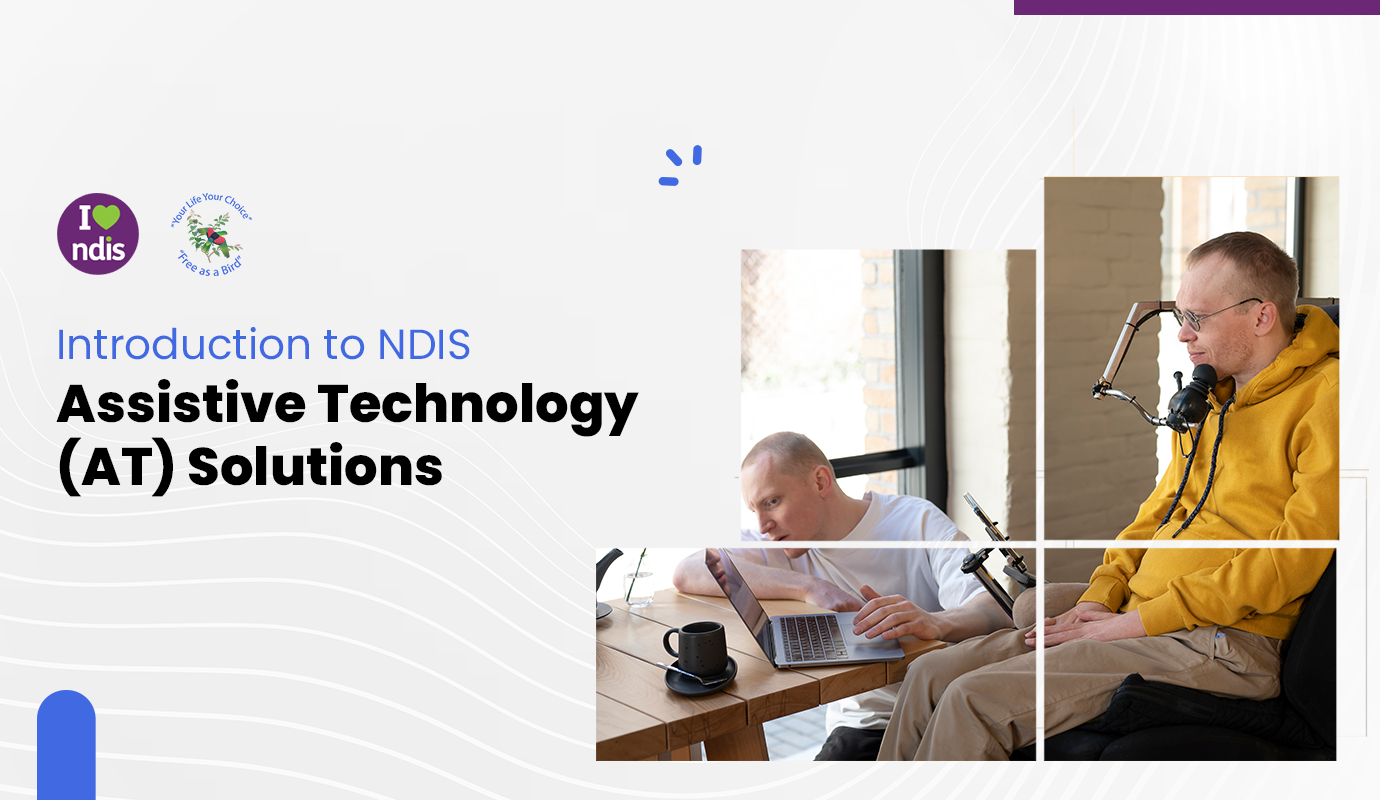Introduction to NDIS Assistive Technology (AT) Solutions
The rise of the famous Australian government disability program, NDIS, has significantly transformed the lives of people with disabilities. NDIS programs and schemes are not limited to general therapies and support services. It offers a unique set of Assistive Technology, aka AT solutions, for its participants. Technological and digital enhancement has nurtured every sector, so why should healthcare, especially the disability segment, be left behind?
Assistive Technology refers to a vast section of advanced equipment and tools NDIS uses to treat its participants. In this informative NDIS blog, we will unveil more about Assistive Technology. From concept to AT future trends, you will know many vital prospects of this NDIS's staggering offerings.
Understanding Assistive Technology (AT)
Assistive Technology, aka AT, refers to advanced equipment or devices that help disabled individuals do things they couldn't do due to their disability. The tools and tech involved in ATs span a broad spectrum, ranging from low-tech devices like bathroom grab bars to high-tech software like computer screen readers.
One key aspect of AT solutions is their personalization. They are designed to meet each individual's unparalleled needs and abilities, enabling them to overcome their specific challenges and fully participate in their daily activities. This personal touch is what makes AT solutions so effective and life-changing.
Assistive Technology Category
AT solutions come in all shapes and sizes, so let's explore some of the main categories:
Mobility
This includes wheelchairs, walkers, canes, and other devices that enhance movement and independence.
Vision
Think screen readers, magnifiers, and unique computer displays that help people with visual impairments interact with the world.
Hearing
Hearing aids, amplified phones, and captioning systems are just a few examples of AT tools that bridge the gap for people with hearing loss.
Communication
AT offers options for individuals with speech difficulties, such as communication boards, voice synthesizers, and alternative keyboards.
Learning
AT tools like text-to-speech software, graphic organizers, and specialized educational software can greatly benefit students with disabilities.
Daily Living
From adapted kitchen utensils to bathroom grab bars, AT helps people with disabilities manage everyday tasks more efficiently.
NDIS and Assistive Technology
The NDIS plays a vital role in empowering people with disabilities in Australia by providing funding for various support needs, including Assistive Technology (AT). This structured funding covers various assistive technologies, categorized by cost and risk. However, participants must showcase proper eligibility to get the required funding.
AT Eligibility Criteria for NDIS Participants
To be eligible for NDIS funding for AT, you must be a participant in the scheme and meet the following criteria:
- Permanent disability that significantly affects your everyday life.
- The AT solution is considered "reasonable and necessary" to address your functional needs.
- The AT cannot be funded by other government programs or health insurance.
Ways to Access NDIS AT
The process of obtaining Assistive technology support under NDIS is simple. If you match the eligibility criteria and have an important reason, it's only a matter of time. But to come to that matter of time, you have to undergo a few steps, which include:
Planning Meeting
Brief about your requirements and goals with your NDIS planner. They will assess your eligibility for AT funding.
Needs Assessment
An occupational therapist, physiotherapist, or other qualified professional will evaluate your requirements and recommend suitable AT solutions.
Plan Development
Your NDIS plan will outline the approved AT supports, including funding amounts and any specific requirements.
Finding a Provider
Choose a registered NDIS provider to supply, install, or maintain your AT.
Implementation and Review
Once you receive your AT, the provider will ensure proper training and support.
Note:
NDIS officials might review Your AT plans periodically to assess their effectiveness and adjust as needed.
Future Trends in Assistive Technology
AT's future is brimming with exciting possibilities in the ever-evolving digital era. Tech stacks like Artificial Intelligence (AI) have been used to personalize real-time support. In contrast, the Internet of Things (IoT) has already been on the frontline, bringing game-changing solutions like Smartwatch, AR, VR, etc.
In addition to these two, we can expect advancements in Brain-Computer Interfaces (BCI), which have the potential to revolutionize communication and movement control. Lastly, the inclusion of Telehealth Integration has turned out to be a cutting-edge AT solution that exclusively promotes remote access to healthcare professionals.
Final Thoughts
Assistive Technology is more than just any tools or equipment; it's about unlocking endless potential and fostering inclusion. By embracing tech innovation and tailoring digital solutions to individual needs, we can create a world where every disabled individual can thrive and participate fully in life. But before that, it is crucial to understand the requirements and current AT trends and how they can help you achieve your goal.
By collaborating with renowned NDIS providers like Admire Care and their healthcare professionals, you can unlock the world of AT solutions and a future filled with greater independence and participation in all aspects of life.
